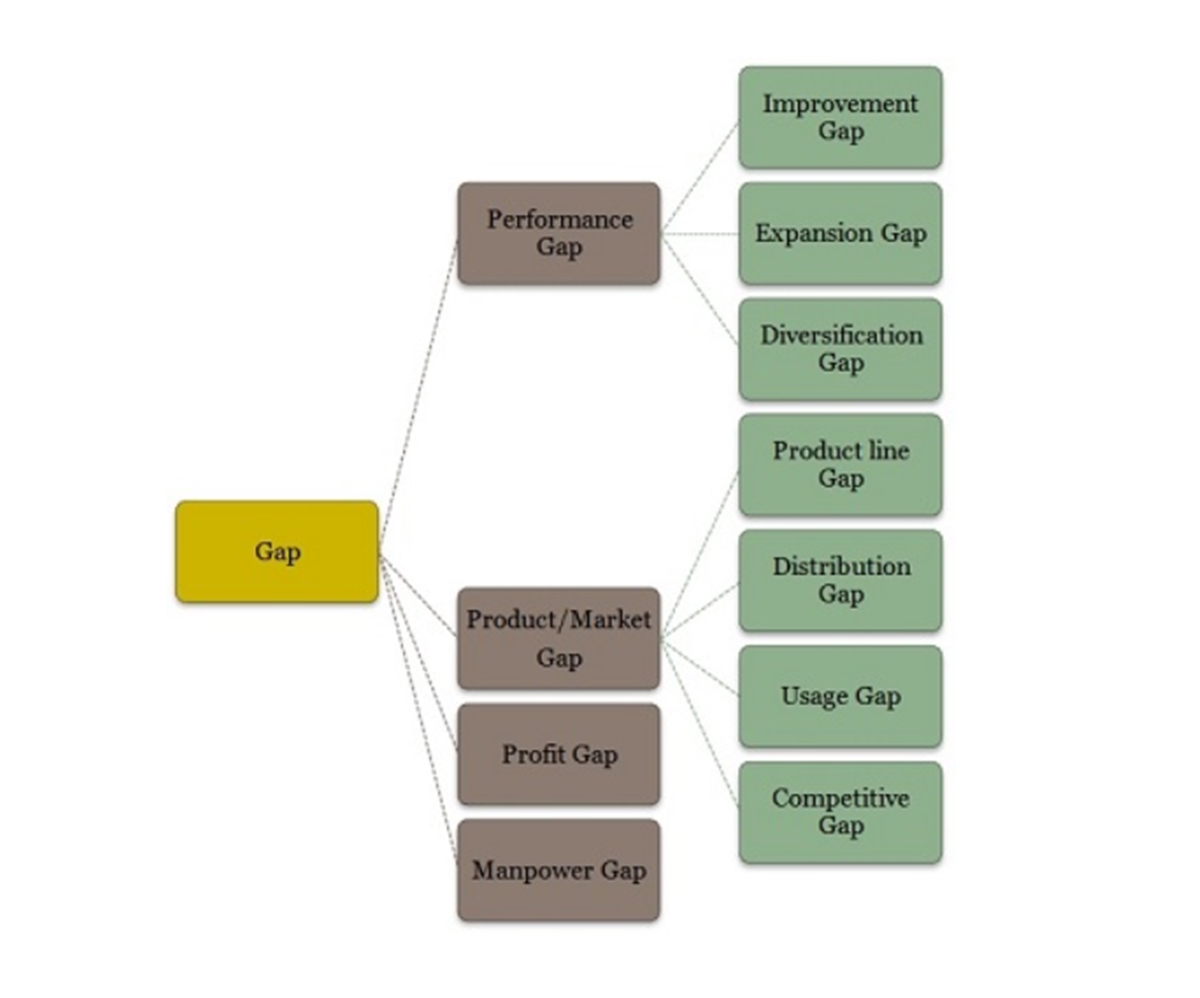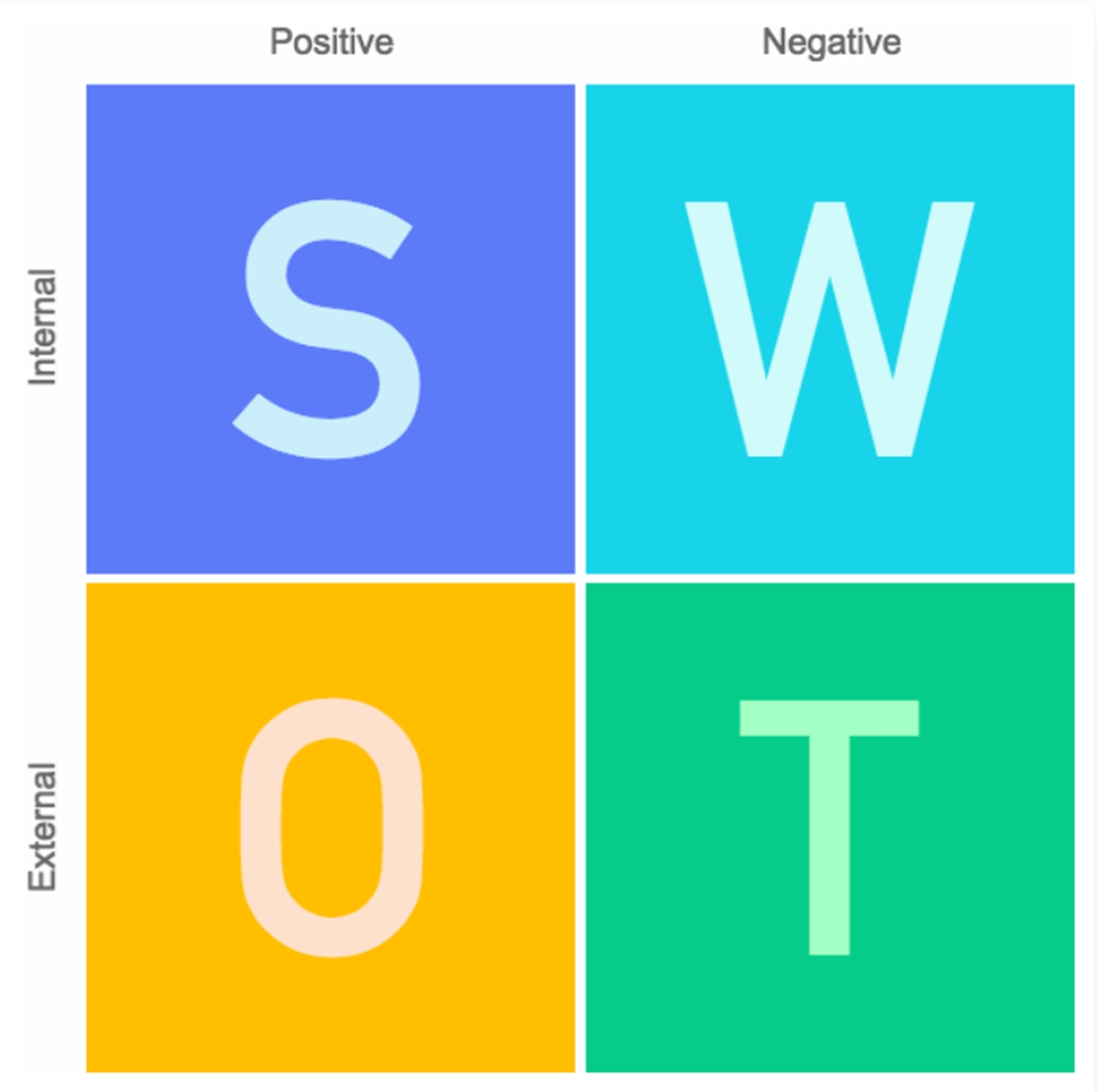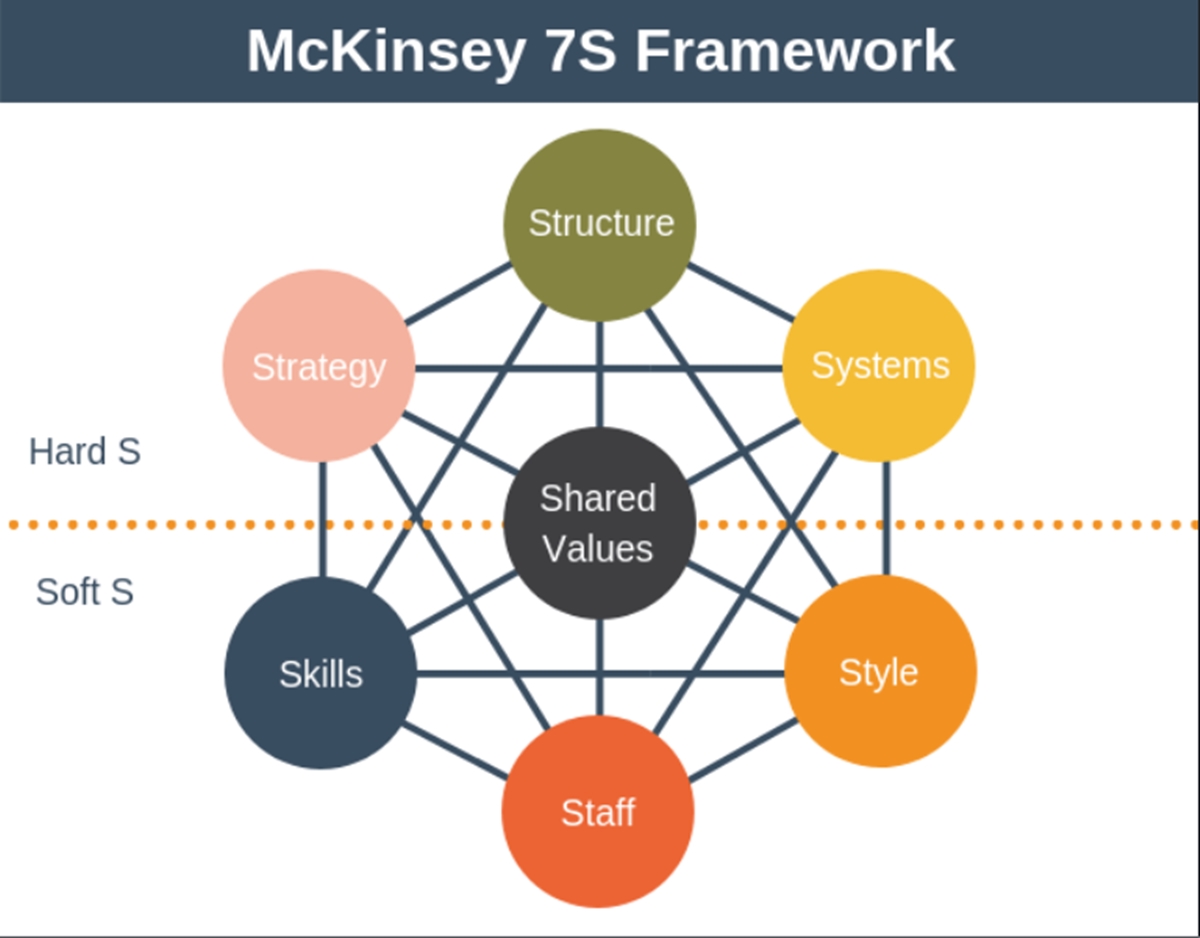What is a Gap Analysis? How to Perform One for Your Business?
How far have you come from the plan you made at the beginning of the year?
Do you have any idea of what has been working well or not?
As a matter of fact, many businesses believe that they are operating so smoothly and proudly announce it to their shareholders. However, remember that’s always much easier said than done.
To reach such a well-orchestrated state, you need to figure out clearly the expectations you create and the actual results you get. One proven method for helping you determine that is a gap analysis.
This guide will run you through the exact definition of gap analysis, common gap analysis tools, and especially necessary steps to perform for your business.
Let’s start right now!
What is a gap analysis?
When mentioning gap analysis, think about a seesaw. You were so familiar with this when you were a kid, right?
One side of the seesaw is your current performance, and the other side is your desired future goals. Between them is a gap. Your task is examining and assessing this difference or gap between current performance and desired future goals.
So, in general, gap analysis is defined as the process of comparing the actual state with an ideal state or goal, which highlights shortcomings and opportunities for improvements. Other names for this include needs assessment, need-gap analysis, and needs analysis.

It can be boiled down into the following questions:
- Where are we now?
- Where do we want to be?
- How are we going to bridge the gap?
By comparing the current with the target state, business units, companies, or teams can:
- Detect weaknesses or limitations they are facing.
- Determine what they need to make their performance or results better.
- Support managers and investors to make decisions.
- Evaluate individual or team performance by looking at some attributes, such as performance level, productivity, and task competency.
- Balance the allotment and integration of resources from the current allocation level closer to an optimal level, in the case of manufacturing or production. The resources can be money, material, time, or labor resources.
Gap analysis can be applied in many areas, such as:
- Sales
- Human resource management
- Financial performance
- Quality control
- Employee satisfaction
- IT skills
- Cost control
- Market competitiveness
Benefits and drawbacks of gap analysis
Gap analysis is a frequently-used tool because it brings a set of benefits to companies and organizations. These benefits include the following:
- Ensuring that project requirements have been met as planned.
- Uncovering the gap between perception and reality.
- Providing insights into the areas which require more improvements, such as products, efficiency, profitability, customer satisfaction, performance, and competitive advantage.
- Determining the weaknesses and shortcomings that need addressing.
- Providing necessary information for managers and decision-makers, which further helps improve performance.
- Allocate resources and energy efficiently.
While necessary and valuable, gap analysis is not completely perfect. Some limitations related to the gap analysis process may be:
- It costs time and even money to conduct a gap analysis.
- The success of gap analysis depends highly on the persistence and knowledge of people involved in the process.
- If it is not investigated deep enough, the real root cause of the problem can be left unsolved, and various complexities behind them might be missed.
- There are high chances that the results of analysis can be inaccurate and outdated because of constant changing and shifting, especially in fast-moving industries, or large organizations.
Although there are some existing drawbacks when carrying out a gap analysis, it is advisable that your company should try at least once, to see and explore different aspects of this process.
Gap analysis examples
As stated before, gap analysis ranges across many areas of business. Below are some examples, which can help you understand the usability and applicability of this process
Sales performance
A manager or manufacturer can look at his products and evaluate which ones are performing well and which aren’t. By doing this, he or she can evaluate whether the products are appropriate, and any improvements or sales strategies required to make more profits and meet the demands in the future.

Product or service evaluation
Before launching a product or service into the market, companies can implement a gap analysis to know whether all functions and features are working well as they forecast.
New product launch
After a specific set of times when a company launches its new product or service, they can do a gap analysis to find out why sales do not meet expectations.
Supply management
A dropshipping retailer, for instance, finds his store running out of supplies frequently, then he can run a gap analysis to identify the reason behind. After creating one, he may detect the cause and find better dropshipping suppliers for his business.
Productivity
When your team can not meet the targeted productivity level, your leader needs to know why and how to improve it. That’s where a gap analysis becomes useful!
Individual assessment
A team leader of an e-commerce company can have each member perform a gap analysis on themselves, and use these results not only to find ways to improve the performance of each one but also to draw out the best practices that everyone can adopt.
Different types of gap analysis
While the term “gap analysis” is quite clear and straightforward in the process of looking at where you are, and comparing it to where you want to be, there are a few different approaches that should be considered, depending on the context and the niche of your analysis.
There are 4 different types of “gap,” all of which are pretty easy to understand:

Performance gap
The difference between the actual and intended performance. For example, you’re looking to grow your business via Instagram. You’re currently at 1,000 followers and want to increase this number to 2,000 for one month. But actually, your Instagram page attracts only 500 more. So, you need to cement the reason behind this performance gap.
Product/ Market gap
The gap between the current and anticipated sales. It is different from market research because it is more proactive. That means keeping one step ahead of the market, as well as avoiding sudden and unexpected changes to influence your strategy.
Profit gap
The variance between the actual and expected profit of a company. Problems with profit forecasting might involve either business planning or execution, or perhaps even both. Many external factors, such as market trends, aggressive competition, or unforeseen political implications can affect profit.
Manpower gap
When there is a lag between the required number and quality of workforce and actual strength in the organization, it is understood as a manpower gap. Such a manpower gap analysis provides HR managers with a clear overview of workforce competencies and human resource adjustments if necessary.
5 common gap analysis tools
If you still find it hard to do a gap analysis and need a credible tool or framework to follow, then here you are!
In fact, when performing a gap analysis, there are a few tools and models that you can utilize. Each tool can be used as an organizing principle for both discovering causes and recommending changes. And, this section will help you understand the most common gap analysis tools. So, just follow us!
Brainstorming
Brainstorming is a divergent thinking tool for idea generation on a given subject in a limited period of time. It is commonly conducted in a session or workshop environment to stimulate critical and creative thinking, and to generate useful and innovative solutions to a problem.
Its objective is not necessarily quality, but quantity, and is based on the principle that “two heads are often better than one.”
So, a series of meetings or discussions can be held for the business analysis team to brainstorm ideas about problems that exist in the business process and how to resolve them.

Basically, brainstorming is not that complicated. In a nutshell, here is how brainstorming works:
- Gather a group of people together to address a problem, challenge, or opportunity.
- Ask members to generate as many ideas as possible - even when they may be “off the wall”.
- Review the ideas, select the most interesting ones, and then lead the discussion to how to combine, improve, and implement the ideas.
Benchmarking
Benchmarking is the process where you measure the performance of your company’s projects, products, or services with the best practices of the industry or other companies, and use this information to drive possible improvements.
To help you understand this technique, we will take an example of a newly-established e-commerce store builder. The manager of this site wants to use benchmarking as a way to perform the gap analysis for his business. So, he can implement this by these following procedures:
- Confirm objectives: find out where he is and where he wants to be, based on the benchmarking standards.
- Identify benchmarking partners: he can compare with the best online store builders in recent times, such as Shopify, Wix, WooCommerce, etc.
- Collect data: Data needed for the analysis should include the internal and external resources about the benchmarking partners.
- Analyze the data
- Identify the opportunities: search ways for narrowing the gap between current and desired measures.
- Implement activities recommended for bridging the gap.
Remember, if the objective of benchmarking is to set appropriate quality metrics and reliability, then the gap analysis will base on benchmarking results to measure the gap you are facing up with at the moment.
SWOT analysis
A SWOT analysis focuses on Strengths and Weaknesses in the internal environment and Opportunities and Threats in the external environment. Describing the problem in these terms can point the way toward a solution by showing you how to avoid potential threats, while taking advantage of strengths to exploit valuable opportunities.
Let’s have a look at how to use SWOT to do gap analysis:
- State why SWOT is being performed (usually when your current state gets into some trouble), and what outcome is expected from this activity
- List down all the members from relevant teams or departments and invite them
- Create a 2 x 2 matrix and label each of the section as below

- Ask members the following questions about their objective (desired state)
- List positive and outstanding internal characteristics that will help in achieving the objective (Strengths)
- List the processes/areas that diminish the chances of success in the attainment of the objective (Weaknesses)
- List the external situations or conditions that make the objective more achievable (Opportunities)
- List factors that might pose a risk to the success of the desired target (Threats)
- Analyze the above factors and evaluate how you can use the strengths to exploit opportunities while avoiding threats.
This technique will also help you realize where and how you stand out against your competitors in the industry.
PESTLE analysis
A PESTLE analysis is a tool or framework used by marketers and analysts to monitor and highlight the macro-environmental (external) factors that have an effect on an organization, which is an extension of the PEST model.
Similar to SWOT, PESTLE analysis helps you identify threats and opportunities by examining the following 6 external factors of your business environment:
- Political
- Economic
- Sociological
- Technological
- Legal
- Environmental
This analysis eliminates gaps by pinpointing current issues, highlighting upcoming opportunities for change, and minimizing risks in the market.
For instance, the unstable political and economic conditions in the supplier’s country make it hard for them to transport enough material as expected to you. It might become the reason why you cannot achieve the targeted sales.
McKinsey 7S framework
The final tool that we recommend is the McKinsey 7S framework, which analyzes a firm’s organizational design by looking at 7 key internal elements: structure, systems, strategy, staff, skills, style, and shared values.
You can use the McKinsey 7S framework when a particular part of the company is not living up to your expectations. The analysis looks at the characteristics of the company in terms of each of these aspects and examines where the gaps are.
Once it is clear that the cause for the gaps is a lack of skills, for instance, or an adequate structure, you can address the problem in a focused way.
McKinsey 7S framework can help you with any of the below purposes:
- Determine the gaps that may appear in the business
- Identify which areas need optimizing to promote business performance
- Align departments and processes during a merger or acquisition
- Examine the results of possible future changes within your business.
The 7 elements are divided into 2 groups: hard elements (which is relatively easy to identify, and management can directly influence them), and soft elements (which can be harder to describe, less tangible, and more influenced by the company culture).

Hard elements:
- Strategy: your plan of action for building and maintaining a competitive advantage over your competitors.
- Structure: how your company is organized, and how teams and departments are structured.
- Systems: formal and informal methods of operation, procedures, and communication flows that employees use to get their job done (e.g, IT systems).
Soft elements:
- Staff: the employees and their competencies.
- Skills: the skills of both the organization and the employees.
- Style: leadership and management styles.
- Shared values: core values of the organization, as shown in its corporate culture and general work ethic.
So, how can you apply this framework to your gap analysis? Here is the answer:
- Gather around a relevant and competent team
- Check whether all elements are properly aligned with each other (identify gaps and shortcomings in the relationship among the elements)
- Define the state where these elements would be optimally aligned
- Come up with a specific and realistic action plan to realign the elements
- Implement the changes and review the 7S regularly, moving forward.
In short, above are the 5 most frequently used tools that assist in conducting a thorough gap analysis. You can use one or more of the five tools to get the best results.
The 4-step gap analysis process
In large organizations, the gap analysis process generally falls under the responsibility of business analysts, project managers, or process improvement teams. But with a well-designed guide and little training, anyone can work through the process.
So, the 4 basic steps for performing a gap analysis process are explained below:
Analyze the current state
First, you need to choose which area of your business you want to focus on and start with your current state.
No matter if it’s from product quality, finance, or marketing activities, pick a specific problem area you need to drill down on. For example, if it’s marketing, a particular area would be email marketing.
Or, your company desires to have the most stellar customer service in your industry, but your team reports that many customers end their calls in frustration. You should ask yourself: Is there any problem with your products or services? Does your support team need more training courses on handling difficult and angry customers?
You won’t know exactly until you dig in, which means talking with the people involved, gathering data, and finding out improvements. You might collect quantitative information, like the number of negative calls received each week, or qualitative information, like customer comments or feedback from your support reps on the current calls.
What’s the most crucial at this step is understanding the root of the problem, which is much easier to identify once you’ve laid out all the possible contributing facts. As a matter of fact, your gap analysis process should evaluate everything you recently do to help you get the “big picture.”
Formalize the ideal future state
Once you have figured out the big picture and understand how your team or company currently functions, you need to be idealistic. Think about where you would like to be!
Don’t worry about how you’ll get there. That’s the task of the next step. Right now, you just need to dream big, as the sky’s the limit! But remember to draw your ideal future state in a SMART goal, which is Specific, Measurable, Attainable, Relevant, and Time-bounded.
Take the previous case of customer service as an example. In this scenario, your current performance obviously falls short or needs changing. But instead of ignoring, or slapping a band-aid on the situation, picturing the ideal picture would help you a lot.

A good gap analysis tool, as we stated in the above section, would become your ally. It might be a brainstorming board or simply a mind map to stimulate your team’s creativity. Then, you can set a SMART goal for your customer support team, such as positive reviews or calls should increase by 30% in the next month.
Identify and document existing gaps
Completing the first two steps only won’t bring you great results. Putting them together can expose what’s missing between your actual performance and your potential.
A gap analysis could bring up the following question: What limits us from reaching our ideal future state?
In our example, the factors that affect the customer support team’s productivity may include the mediocre level of employees, no incentives for top performers, or lack of team dynamics.
Once you identify your existing gaps (this is where the useful tools we recommend above work again!), you can know exactly what is stopping you from reaching your goals!
Devise and implement a plan to bridge the gap
After you’ve charted out the possible gaps, it’s time for you to implement a plan to bridge the gap, and convince others in your team to cooperate. The changes that you’ll make may also affect other departments and teams, so it’s essential to come up with a plan.
Establish a clear strategy and attainable objectives to help you actualize your goals and get everyone on board.

For example, when making a presentation to your managers or executives, have a detailed schedule or timeline for the plan. You can also create a more comprehensive action to promote your team performance, such as provide training courses, provide adequate incentives for top performers, and organize outdoor activities to encourage the team spirit.
After all, how you bridge the gap will depend much on your organizational and team priorities. So, work together to find what works best!
Conclusions
By performing a gap analysis, you can force yourself to have an honest look at the state of your business today, as well as identify the specific factors that are limiting you from reaching your business goals.
This guide has helped you cover everything about gap analysis, including the definition, benefits, limitations, 4 common types, 5 frequently-used tools, and finally, the 4-step gap analysis process. So, hopefully, after reading it, you can develop your business better and make it more competitive in the marketplace!
New Posts

10+ Mother’s Day Spa Promotion Ideas To Increase Sales







